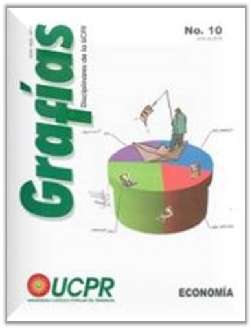Desempleo, crecimiento y remesas en colombia en el período 2001-2009
DOI:
https://doi.org/10.31908/grafias.v0i10.1586Keywords:
Remittances, labor market, economic cyclesAbstract
This article assesses the effects of international remittances on the global participation rate (GPR) and unemployment rate (LIR) in order to answer the question of whether the recent increases in both rates stem from a reduction in remittances. The hypothesis is that such reduction would compel people outside the labor market to try to enter it again. The article finds that this hypothesis is true. People with stable remittances tend to reduce their number of working hours, a situation that changes when such remittances decrease.
References
BLANCHAR, 0. (2006). Macroeconomía. Cuarta edición. Prentice-Hall
GARAY, L. y RODRÍGUEZ, A. (2005a) Características Socioeconómicas de la población emigrante internacional ubicada en AMCO. OIM.
GARAY, L. y RODRIGUEZ, A. (2005b). La Migración Internacional: Una Síntesis de Aproximaciones Teóricas Alternativas La Emigración Internacional en Colombia: Una Visión Panorámica a partir de la Recepción de Remesas. OIM.
GARAY, L. y RODRÍGUEZ, A. (2005c). Estudio sobre Migración Internacional y Remesas en Colombia La Emigración Internacional en el Área Metropolitana Centro Occidente.
Colombia Caracterización Socioeconómica de la Población Emigrante y Evaluación del Impacto de las Remesas Internacionales. OIM
Centro de Estudios Latinoamericanos Fondo Multilateral de Inversiones/ Banco Interamericano de Desarrollo, marzo 2007. Remesas internacionales en Colombia.
MORA, J (2007). Relación entre la participación laboral y las remesas en Colombia.


